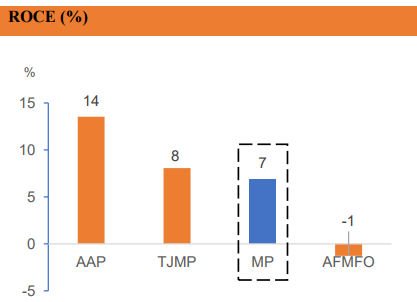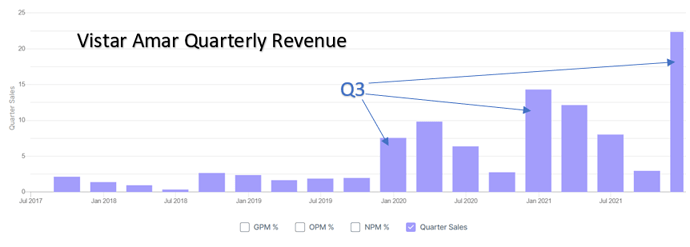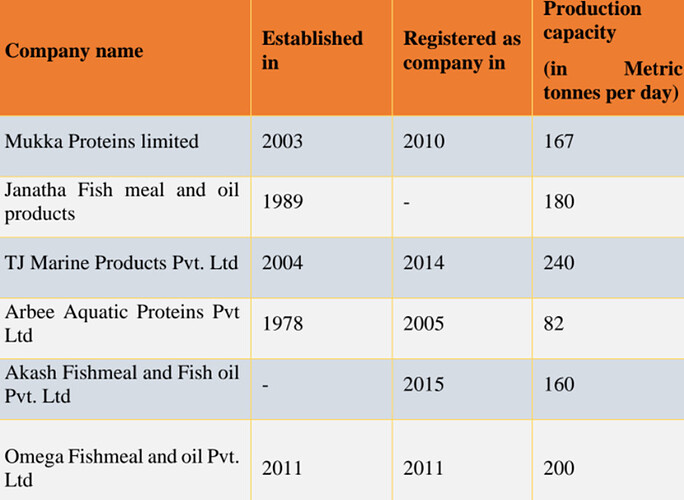Scuttlebutt notes:
There are around 40-50 workers and some office staff for total of around 100 employees. Fishmeal yield is around 25% for the whole industry and it is similar for Vistar Amar also. They are using only waste fish as RM. Pricing is around Rs 70/kg for whole industry and same for Vistar. Current capacity is 40 TPD and current utilisation is around 30-32 TPD (75%). They are not exporting anything- it is all domestic sales. They are using steam drying (not flame drying). There is seasonality in RM availability and production is low in monsoon.
Some research I have been doing: RM availability (and hence production) is greater around Sep to Feb. The major quarter here is Q3, hence one would expect Q3 to be a higher-revenue quarter. This hypothesis is confirmed by the numbers:
In my attempts to figure out whether the great Q3FY22 they posted is sustainable, this probably suggests that it is not- Q3 of every FY will generally be higher given the nature of the business. My major concern here is that fishmeal seems to be a commodity; the industry is highly fragmented with extreme competition. I do not know what is the differentiation here- neither is Vistar the low cost producer since its scale is much lower than competitors:
Yet Vistar’s RoCE is much higher

MP: Mukka Proteins. Ltd
AFMFO: Akash Fishmeal and Fish oil Pvt. Ltd
AAP: Arbee Aquatic Proteins Pvt Ltd,
TJMP: TJ Marine Products Pvt. Ltd
Seems like there is something different but need to figure out what
Edit: I made a mistake here. With some research I found that Vistar Amar is making low-protein-content fishmeal of around 55% protein content. This is because Vistar uses fish waste as a raw material. The south-based (generally Mangalore-based) fishmeal makers use industrial fish like sardines, anchovy etc as RM. Hence, south-based fishmeal makers have higher protein content of around 65%. The animal feed manufacturers require fishmeal with protein content of 60% (neither higher nor lower than this is acceptable). So, the south-based companies purchase low-protein fishmeal from Vistar and blend them with their own fishmeal to get 60%. Thus, Vistar supplies to south-based fishmeal makers and not to the feed makers. Hence, south-based fishmeal makers are Vistar’s customers, not competitors. Also, due to the difference in RM for south-based cos vs Vistar, the south-based ones also get fish oil as a by-product, whereas Vistar does not.
Disc- no holdings as of now. Will update disclosure as and when required.


